As the demand for enhanced connectivity continues to grow, the upcoming 5G events for Government professionals present a unique opportunity to explore the transformative potential of next-generation wireless technology. With 5G, agencies can achieve unprecedented levels of speed, reliability and efficiency, paving the way for innovative solutions in public safety, emergency management and critical infrastructure. These events will showcase how 5G is revolutionizing operations, enabling the integration of advanced technologies such as artificial intelligence (AI) and the Internet of Things (IoT) into Government workflows. Join Carahsoft and our esteemed partners at these pivotal gatherings to discover how to harness the power of 5G, engage with industry leaders and gain insights that will drive mission success while ensuring the security and integrity of Public Sector networks.
2025 5G Summit | Potomac Officers Club
February 27 | Tysons, VA | In-Person Event
The U.S. Government is at the forefront of leveraging 5G and FutureG technologies to drive transformative advancements. From strengthening national security and public safety to enhancing citizen services and critical Federal missions, 5G is set to revolutionize operations across the board. Ready to explore its full potential? Join the Potomac Officers Club’s 5G Summit to dive into key topics including 5G at the edge, its role in the DoD’s CJADC2 initiatives, 5G-enabled warfighting capabilities and more.
Sessions to look out for:
- Securing 5G in the Field
- Operationalizing the Vision: From 5G Concepts to Real-World Defense Applications with Leland Brown (Moderator)
Carahsoft is a key exhibiting sponsor at this year’s event, showcasing its dedication to advancing the public sector’s digital transformation. By partnering with leading technology providers, Carahsoft offers innovative 5G solutions that support secure communications, smart city applications and enhanced operational efficiencies. These collaborations ensure that Government agencies can deploy scalable and secure 5G technologies to meet the growing demands of their digital infrastructure.
MWC25
March 3-6 | Fira Gran Via, Barcelona | In-Person Event
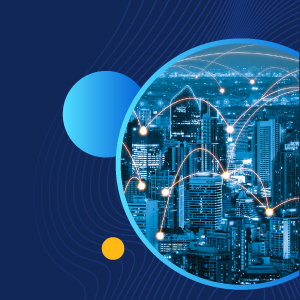
Mobile World Congress (MWC) Barcelona 2025 is a key industry event where leaders from top global companies, international Governments and innovative technology businesses gather to frame the future of connectivity. This event offers iconic insights from renowned and emerging voices across technology, industry, policy and ethics. Attendees can explore groundbreaking innovations from the world’s greatest startups and tech pioneers and witness the intersection of connectivity and connected industries driving revolutionary solutions. Additionally, MWC Barcelona is a unique platform for bridging ministerial programs, social policy, business leadership and technology development to achieve sustainable progress.
Sessions to look out for:
- 5G’s Big Moment: The Time is Now
- 5G Innovations That Matter: Real-World Use Cases Driving Value
Carahsoft maintains strategic partnerships with Nokia, AWS, Palo Alto Networks and Ericsson. These collaborations enable Carahsoft to offer a comprehensive range of 5G solutions and services to the public sector. By leveraging the strengths of these industry giants, Carahsoft ensures that Government agencies have access to cutting-edge technology for enhanced connectivity, security and cloud solutions. For more information visit 5G Technology Government Providers | Carahsoft.
IWCE 2025 Conference
March 17-20 | Las Vegas, NV | In-Person Event
The International Wireless Communications Expo (IWCE) is the premier annual event uniting stakeholders across public safety, Government, emergency management, utilities, education, transportation, healthcare and other critical infrastructure sectors. It is a unique opportunity to network, learn and explore how advancements in critical mobility technologies are transforming operations and reshaping the future of critical communications.
Sessions to look out for:
- AI and 5G Mobile Devices: Transforming Public Safety Operations
- Advancements in Spectrum Monitoring for Rapid RFI Location
Carahsoft collaborates with Verizon, T-Mobile and AWS to enhance Government connectivity with cutting-edge 5G solutions. These collaborations enable Carahsoft to provide secure and scalable 5G technologies that enhance communication, operational efficiency and smart city applications for public sector organizations. For more information visit 5G The Future of Government Connectivity | Carahsoft.
Future G for Defense Summit
March 26-27 | Alexandria, VA | In-Person Event
DSI’s 2nd Annual FutureG for Defense Summit will gather leaders from the DoD, Federal Government, industry and academia to discuss 5G and wireless networking technologies. This two-day event will focus on the adoption of commercial 5G and NextG technologies to support Warfighter. The implementation of 5G is crucial for faster speeds, more bandwidth and supporting advanced technologies like AI. Greater cooperation between the private sector and Government is essential for integrating 5G and FutureG capabilities. Senior leaders will address initiatives such as developing open radio networks (O-RAN) and fostering public-private partnerships to bridge the 5G gap.
Sessions to look out for:
- 5G, 6G, NextG: Preparing for the Next Generation of Wireless Network Technologies Across DoD
- Integrating 5G Capabilities for the Future Soldier
Through its distribution partnerships with T-Mobile and MITRE, Carahsoft plays a vital role in advancing Government connectivity and defense capabilities. These strategic partnerships ensure the delivery of cutting-edge networking infrastructure and enablement of seamless secure connectivity for various Government applications.
OFC 2025
March 30-April 3 | San Francisco, CA | In-Person Event
Immerse yourself in the future of the high-quality optical communications and networking industry at OFC 2025. This premier event brings attendees the latest research, innovations and newest commercial products through hundreds of exhibitors, speakers and thought leaders across industry and academia. Additional programs attendees can expect throughout the week include symposia, in-depth tutorials, workshops and panels that will showcase market trends, emerging technologies and insight into the state of the industry.
Carahsoft is thrilled to announce our sponsorship of the Full Spectrum Rock n Roll Party and Concert on April 2! OFC badge holders get free entry to this exciting event. We invite you to join us, along with our strategic partners Infinera and Nokia, at the Chase Center in San Francisco for an unforgettable evening of food, drinks and rock ‘n’ roll. This event promises to be a fantastic opportunity to network, celebrate and enjoy great music!
Smart Cities Connect: Spring Conference and Expo
April 14-16 | San Antonio, TX | In-Person Event
Smart cities have transitioned from visionary concepts to practical realities, delivering significant benefits for both people and the planet. From pioneering pilot projects to long-term infrastructure investments, smart city solutions address pressing urban challenges. This spring, join thought leaders, urban planners, technologists, policymakers, researchers and industry experts to explore the strategies, critical elements and collaborative efforts needed to drive sustainable transformations in urban communities and examine the diverse dimensions of fostering lasting change in cities.
Sessions to look out for:
- Open and Smart Solutions for the World’s Smartest Cities
- Transforming Urban Infrastructure: Public Safety, Equity and Environment
Carahsoft’s dedication to advancing connectivity solutions and fostering innovation is showcased through its strategic partnerships with 2024 sponsors Intel, Dell, Nvidia and AWS. These collaborations enable Carahsoft to deliver cutting-edge technologies that enhance operational efficiency and secure communications for Government agencies. By working with these industry leaders, Carahsoft supports the digital transformation of the public sector, ensuring that Federal, State and Local Governments have access to the latest advancements in technology.
International Telecoms Week 2025
May 5-7 | National Harbor, MD | In-Person Event
International Telecoms Week (ITW) is the premier event for gathering leaders from across the digital infrastructure spectrum. ITW brings together visionaries and innovators to shape the future of global communications. With cutting-edge technologies and unparalleled networking opportunities, it serves as the largest platform to connect with the entire international connectivity market, from satellite to subsea and beyond.
Sessions to look out for:
- Future Networks
- Data Center 2.0
- Multi-Channel Communications
Connect with Carahsoft’s strategic partners, including Nokia, Infinera and T-Mobile, at International Telecoms Week 2025 in National Harbor, MD. These industry leaders are sponsoring the event to showcase their commitment to innovation across the digital infrastructure spectrum. This is a fantastic opportunity to explore cutting-edge technologies, network with experts and learn how these partnerships are driving advancements in connectivity and telecommunications. Don’t miss out on this exciting event!
Connectivity Expo 2025
May 12-14 | McCormick Place, Chicago, IL | In-Person Event
This event is a premier gathering for professionals in the connectivity industry, focusing on the latest advancements in 5G, fiber and wireless technologies. Attendees will have the opportunity to engage with industry leaders, explore innovative solutions and participate in sessions covering a wide range of topics, from network infrastructure to digital transformation. Connectivity Expo Connect (X) is an essential event for anyone involved in the future of connectivity.
At the Connect (X) 2025, be sure to attend sessions on the latest 5G deployments, advancements in fiber technology and innovations in wireless infrastructure. These sessions will feature insights from industry leaders and showcase cutting-edge solutions shaping the future of connectivity.
Connect X will feature over 200 sponsors and exhibitors, cutting-edge content and more than 10 networking events. Don’t miss the opportunity to hear from exclusive Carahsoft partners and speakers, including Sergio Adames, Director of New Partnerships and Business Development at T-Mobile; Tanveer Saad, Head of Edge Cloud Innovation and Ecosystem at Nokia; and Will Adams, VP of Strategic Policy and Planning at T-Mobile. These industry leaders will share their insights on the latest advancements in digital infrastructure and connectivity. Join us for an exciting and informative experience!
2025 UTC TELECOM & TECHNOLOGY CONFERENCE
June 16-19 | Long Beach, CA | In-Person Event
Connect with industry experts and peers at this leading event tailored for information and communication technology (ICT) professionals and partners. Dive into four days of immersive learning and networking, featuring pre-conference training, workshops, roundtables and summits led by global experts who are actively driving utility modernization. Explore cutting-edge solutions in the Exhibit Hall and gain valuable insights to strengthen your professional toolkit.
Sessions to look out for:
- Future of Fiber Technology 3-5 Year Outlook
- Planning the Deployment of a Hybrid Advanced Communications Network of PLTE/5G & Fiber
Carahsoft maintains strategic partnerships with Premier and Gold sponsors Nokia and Ciena. At the 2025 UTC Telecom & Technology event, these collaborations will be showcased, highlighting joint efforts to enhance telecommunications infrastructure. The event, scheduled for June 16-19, 2025, at the Long Beach Convention Center, will bring together industry leaders to discuss advancements in information and communications technology (ICT). Carahsoft’s partnerships with Nokia and Ciena will be pivotal in demonstrating cutting-edge solutions for modernizing utilities and improving network performance.
Carahsoft | Public Sector 5G Summit
August 20 | Reston, VA | In-Person Event
We are excited to announce Carahsoft’s 2nd Annual 5G Summit, Create Opportunities for Innovation. Join us in person on Thursday, August 20 at 12:00pm in the Carahsoft Conference & Collaboration Center. Hear industry and Government thought leaders discuss the latest advancements in 5G network rollouts, explore how 5G can create new opportunities to fulfill agencies’ unique missions and look ahead to the future possibilities of 6G. Following our summit, please join us for a networking reception hosted by Carahsoft for delicious appetizers and refreshing drinks!
Register now to join us at the event and learn more about how Carahsoft and our partners can support your 5G mission initiatives. View our exclusive agenda to learn more about the sessions and speakers!
As the landscape of connectivity continues to evolve, attending key events focused on 5G and related technologies is essential for Government professionals and industry stakeholders alike. Carahsoft facilitates connections between leading experts and attendees while showcasing innovative solutions from its strategic partners. These events not only provide a platform for networking but also offer invaluable insights into the latest advancements and best practices shaping the future of communication infrastructure. Engaging with the vibrant community at these events, supported by Carahsoft’s commitment to advancing connectivity, will empower professionals to drive meaningful change and ensure that their organization remain at the forefront of the connectivity revolution.
To learn more or get involved in any of the above events please contact us at 5G@carahsoft.com. For more information on Carahsoft and our industry leading 5G technology partners’ events, visit our 5G solutions portfolio and 5G Events page.


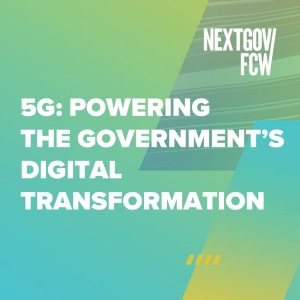 “Private 5G networks have distinct benefits for government, which is why DOD has stated that it is a strategic direction for the department. At Federated Wireless, we custom-build networks for high performance, scale and unlimited capacity using best-of-breed technology from a large ecosystem of suppliers. Private wireless networks provide strong security and control over where the data resides. Unlike a traditional cellular carrier that sends data through an off-site central core, private 5G networks are secure enclaves that are governed by zero trust architectures.”
“Private 5G networks have distinct benefits for government, which is why DOD has stated that it is a strategic direction for the department. At Federated Wireless, we custom-build networks for high performance, scale and unlimited capacity using best-of-breed technology from a large ecosystem of suppliers. Private wireless networks provide strong security and control over where the data resides. Unlike a traditional cellular carrier that sends data through an off-site central core, private 5G networks are secure enclaves that are governed by zero trust architectures.” The DoD and 5G form a mutually beneficial relationship. 5G is created with security built in, so an investment in 5G is an investment in cybersecurity. By utilizing 5G at bases, the DoD can test its capabilities, as well as streamline and amplify the effectiveness of non-combat operations. This can include supply chain efficiency, large scale IoT networks, asset tracking and logistics management all while reducing costs. In return, the DoD tests and further funds 5G. The addition of 5G can provide lower mission costs, enhanced speed and provide higher quality operations. It also factors in risk reduction to each operation, by taking the cumbersome human process out of the equation and making certain operations less complex.
The DoD and 5G form a mutually beneficial relationship. 5G is created with security built in, so an investment in 5G is an investment in cybersecurity. By utilizing 5G at bases, the DoD can test its capabilities, as well as streamline and amplify the effectiveness of non-combat operations. This can include supply chain efficiency, large scale IoT networks, asset tracking and logistics management all while reducing costs. In return, the DoD tests and further funds 5G. The addition of 5G can provide lower mission costs, enhanced speed and provide higher quality operations. It also factors in risk reduction to each operation, by taking the cumbersome human process out of the equation and making certain operations less complex.
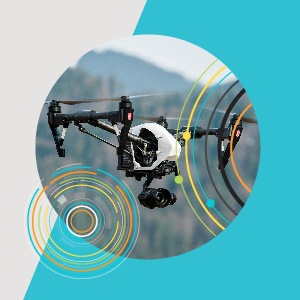 But some hackers have the expertise to bypass this first line of defense. To combat this, military units must layer in more advanced measures. For example, snap-on deception technology can obscure the location of a drone and pilot. In addition, if a drone is lost or captured, cyber-hardening modules can protect against data exfiltration, erase log files, and shut the drone down.
But some hackers have the expertise to bypass this first line of defense. To combat this, military units must layer in more advanced measures. For example, snap-on deception technology can obscure the location of a drone and pilot. In addition, if a drone is lost or captured, cyber-hardening modules can protect against data exfiltration, erase log files, and shut the drone down.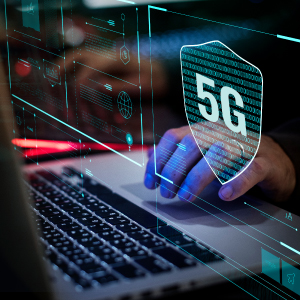 5G has become a priority because it is a wireless technology that combines ubiquitous connectivity and computing. By using more bandwidth and higher frequencies, 5G succeeds in carrying more data quickly and efficiently. This type of network will be critical for projects in fields such as transportation, national defense and industrial production. The technology differs from most in that it allows users to specialize coverage to specific Internet of Things (IoT) or smart devices.
5G has become a priority because it is a wireless technology that combines ubiquitous connectivity and computing. By using more bandwidth and higher frequencies, 5G succeeds in carrying more data quickly and efficiently. This type of network will be critical for projects in fields such as transportation, national defense and industrial production. The technology differs from most in that it allows users to specialize coverage to specific Internet of Things (IoT) or smart devices. “There are many factors that might prompt agencies to consider moving to another cloud environment, including cost, application performance, security and data protection requirements. In most public clouds, applications with frequent data uploads or downloads will typically incur higher-than-normal hosting costs due to ingress and egress charges. Ideally, agencies should have a consumption model that aligns with their data access needs. Similarly, depending on the volume of data and the location of users and adjacent applications, latency may be introduced into application processing, which will present itself to users as poor performance.”
“There are many factors that might prompt agencies to consider moving to another cloud environment, including cost, application performance, security and data protection requirements. In most public clouds, applications with frequent data uploads or downloads will typically incur higher-than-normal hosting costs due to ingress and egress charges. Ideally, agencies should have a consumption model that aligns with their data access needs. Similarly, depending on the volume of data and the location of users and adjacent applications, latency may be introduced into application processing, which will present itself to users as poor performance.”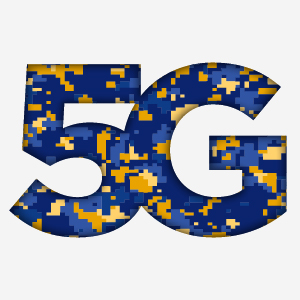 Benefits of 5G Military Usage
Benefits of 5G Military Usage How Is AIOps Different From Traditional Network Monitoring?
How Is AIOps Different From Traditional Network Monitoring?